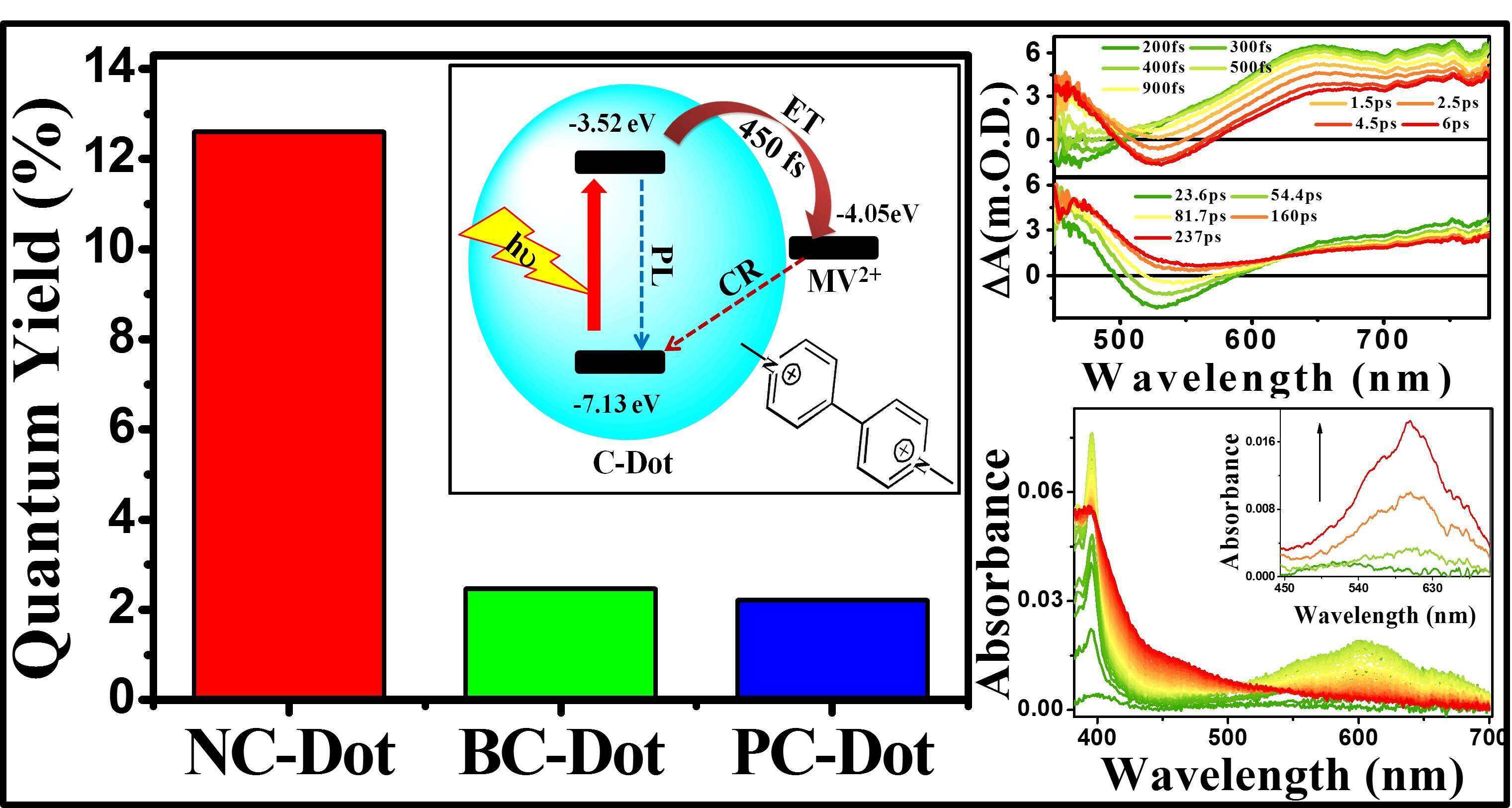
Doping effects in ultrafast carrier dynamics of carbon dots toward efficient photosensitizers
2School of Chemistry, Tel Aviv University, Tel Aviv, Israel, Israel
Carbon dots (C-Dots) have great potential towards the developments of biocompatible photosentisizer for solar-driven catalysis and hydrogen production in aqueous solution. Compared to common semiconducting quantum dots, C-dots have good physicochemical, as well as photochemical stability, optical brightness, stability and nontoxic, while their carbon based source results in tuneable surface chemistry, chemical versatility, low cost and bio-compatiblity. Herein we focus on detailed spectroscopic investigation of doped (B and P) in N-based C-Dot (NC-dot). Steady state and transient absorbance of all doped C-Dot indicate the formation of a photoproduct. To probe the photosentisizing ability of the doped C-Dot, we have followed the photoreduction of methyl viologen (MV2+), which acts as a molecular redox mediator (electron accepter) to the C-dots (the photosentisizer, i.e., electron donor) in aqueous solution. Using steady-state viologen radical generation, we found that different doped C-Dots having different photosynthesizing capabilities. We further used time-resolved fluorescence along with transient absorption to reveal that ultrafast electron transfer to MV2+ and slow charge recombination is leading to a high quantum yield for MV2+ photoreduction. Steady state radical generation QYs are 12.09%, 2.2% and 2.04% for NC-Dot, BC-Dot and PC-Dot respectively. TA study of doped C-Dot-MV2+ complexes clearly indicating that CR processes is directly related to the formation of MV2+ radical.This findings can improve the design and development of efficient photosentisizer over commonly used heterogeneous catalysts in the photocatalytic system by improvement radical generation efficiency in doped C-Dot/redox mediator-based system.

Figure: Bar diagram of MV2+radical generation yields for the B- and P-doped NC-Dot (Left); TA spectrum of NC-Dot in the time range between 50 fs to 250 ps delay time after 420 nm laser pulse (Right, upper); Steady state absorbance spectra of NC-Dot with MV2+ irradiated with 340nm light at different time (0−10 min in 30 s intervals (Right, Lower)
Powered by Eventact EMS